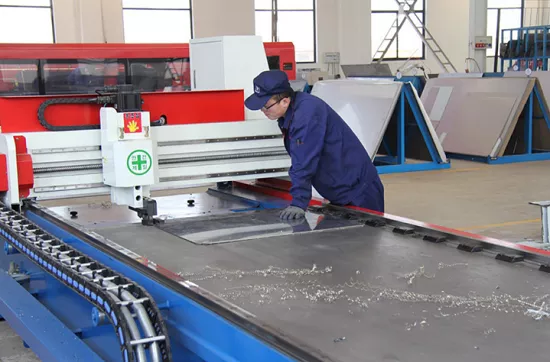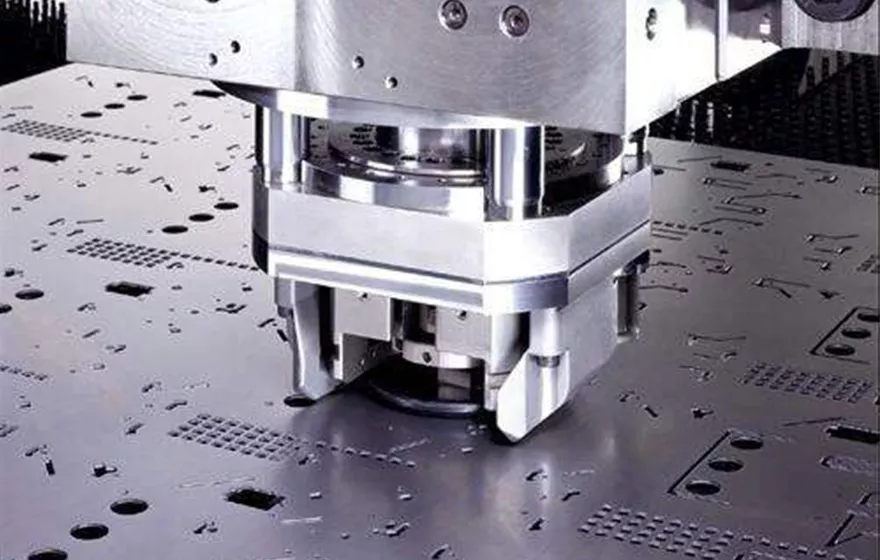- Why Choose Sheet Metal?
- Sheet Metal Fabrication Technology
- Standard Binding Options
- Written at the end
Sheet metal fabrication is a well-established production process for manufacturing sheet metal parts. It involves bending, stamping, cutting, forming, and other techniques to create sheet metal parts. After the sheet metal parts are produced, depending on the purpose and other factors, the sheet metal parts can be post-treated by applying sheet metal finishing.
Steel, aluminum, brass, copper, tin, nickel, titanium, or other precious metals are traditionally used to manufacture sheet metal. Thicknesses vary, but there are two main differences; thin and thick sheets. Many industries rely on sheet metal for its versatility and durability, including aerospace, appliance manufacturing, consumer electronics, industrial furniture, machinery, transportation, and more.
Why Choose Sheet Metal?
Sheet metal has many advantages over non-metallic alternatives and other metal fabrication processes. Sheet metal is much cheaper than machining in terms of machining and material costs. It does not have the extremely high tooling costs of injection molding, which makes sense in mass production.
As in machining, sheet metal allows you to buy the material you need and use relatively little material waste, rather than starting with expensive material, which is wasted in the milling process to remove unwanted material. The unused sheet can be used for another project, while the shavings from the machining need to be discarded and recycled.
As powerful as engineering tools are today, seeing and using the part is the only way to know if a design meets expectations. Is it strong enough? Is it light enough? Does it look, feel and balance properly? Will other components be sacrificed? Even relatively simple components can benefit from real-world testing before being put through hundreds or thousands of parts. Sometimes, it may take multiple prototype iterations to get the right sheet metal part. With a good manufacturing supplier and process, then the overall impact of the project can be kept to a minimum, but it is done early in the prototyping process.
Large companies can easily outsource design to an engineering service provider so they can focus on their core activities. However, choosing the right partner can help avoid further widening the gap between the ideal design and the manufacturing process and the all-too-common real-world scenario of delivering a poor design to the manufacturing floor without addressing design flaws. When selecting a manufacturing supplier, look for a company with a proven track record in manufacturing parts and extensive manufacturing knowledge to ensure fewer design issues and faster time to market during the manufacturing process.

Sheet Metal Fabrication Technology
Cutting: Shearing is one of the oldest methods of cutting sheet metal, but faster, more accurate methods have since been replaced.
Perforating: Using tools called punches and dies, you can punch holes and shapes to create patterns. Particularly good for cutting simple patterns, they are more economical than those cut by laser cutters or water jet cutters. The punch can run at hundreds of strokes per minute, making it a suitable center for the rapid processing of parts.
Laser cutting: A mixture of oxygen, nitrogen, helium, or carbon dioxide is used to burn off the material and produce a clean edge. This form of cutting allows very tight tolerances to be maintained.
Photochemical Processing: A CAD-generated template is used to control the etching leaving a pattern and removing unwanted material through chemical activation.
Folding: In this forming operation, the edge of one sheet of metal is folded over itself or another sheet of metal to achieve a tight fit or a stronger rounded edge. Wrapping is a technique for joining parts together, improving appearance or strength, and strengthening the edges of parts. Two standard crimping processes include roll crimping and traditional die crimping. Folding is performed progressively by crimping rolls. Industrial robots guide the crimping rolls and form the flange. Conventional die wrapping is suitable for mass production. The flange is folded over its entire length using a die-crimping tool.
Bending: When forming along the axis, most sheet metal bending operations involve punch and die-type setups. And there are a variety of geometries available for both the convex and concave dies, resulting in a wide range of shapes. Many different shapes can be obtained by bending metal, from long, gentle curves to small angles equal to, below, or above 90 degrees. When sharp angles are required, a bending machine is usually needed. Rolling and forming methods are used when long continuous radii are required in one direction or along one axis.
Standard Binding Options
If you buy a sheet metal part to test its shape, fit, or function, you may not be too concerned with the overall appearance of the part, but you also don’t want it to have sharp edges or rough surfaces to take the metal straight out of the mill. To remove scum and burrs from laser cutting, we deburr the part.
Sandblasting
Sandblasting is a finishing process that involves blasting thousands of tiny abrasive particles (such as glass or sand) with compressed air on the surface of sheet metal parts. The continuous effect of these tiny beads on the surface of the metal results in a smooth, matte-textured sheet metal surface.
Sandblasting is a fairly standard sheet metal finishing process. However, it is also ideal for cleaning or removing paint from finished parts. The visual quality of sandblasted metal parts makes the finishing a popular choice for visual applications where a matte quality is desired. So is the common aluminum sheet metal finish that can be used for parts with high visual quality requirements. If desired, sandblasting can be followed by other finishing processes, making it ideal for parts requiring cosmetic characteristics.

Anodizing
Anodizing is another sheet metal finishing solution for aluminum and titanium sheet metal parts. It is a technique that uses an electrochemical process to form a corrosion-resistant layer on the surface of sheet metal parts.
The process involves immersing sheet metal parts in an acidic electrolyte and exposing them to an electric current. The combination of these elements results in the transformation of the surface of the sheet metal part into an anodic oxide layer that is fully integrated into the surface of the part.
Anodizing can also produce a variety of surface finishes in a variety of colors. It is a common finishing process for producing mechanical parts, aircraft, automotive parts, precision instruments, etc.
Powder Coating
Powder coating is an aesthetically pleasing process involving spraying powder coatings on the surface of a material. In sheet metal manufacturing, the sheet metal is then baked to coat its surface with paint. This creates a strong corrosion and wear-resistant layer. Powder coating is, therefore, superior to more traditional coating methods because it forms a strong coating on the part’s exterior.
Powder coating is available in various colors to meet the aesthetic and branding requirements of the customer. It is also available in various sheet metal finishes such as gloss, semi-gloss, flat, metallic, and textured. Powder pricing varies by color, finish, and part geometry.
Electroplating
This is another popular sheet metal finishing process where a thin layer of another metal (sacrificial metal) is deposited on the surface of the sheet metal part. Electroplating is performed by placing the sacrificial metal in the anode position and the sheet metal in the cathode position. Both metals are placed in an electrolyte similar to the anode material. The two metals are then chemically bonded by conducting electricity.
There are several options for plating materials, each offering a different combination of properties. At Elimold, we can electroplate sheet metal parts with tin, nickel, and chemical nickel plating. It is important to note that if the plating is used, the tolerances of the original part consider the thickness of the final plating.
Plating increases the electrical conductivity and the resistance of the part to radiation and is, therefore, commonly used to produce radiation shielding.
Written at the end
Sheet metal fabrications are an important part of sheet metal fabrication. They are important for many of the aesthetic or functional uses required in manufacturing. There are many sheet metal working processes you can use. For sheet metal fabrication services, you can contact us at Elimold.
